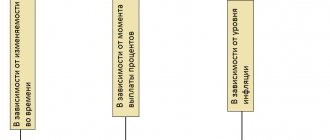olegas Mar 10, 2021 / 63 Views
The term endorsement is usually used to refer to an inscription on a security indicating a change in its owner (endorser). A security, in this case, can be, for example, a bill of exchange, a check, a bill of lading, etc. Most often, this term is applied to bills of exchange.
Typically, the entire reverse side of the bill is intended for endorsement. And if there are too many transfers of the bill from one endorser to another, then an additional sheet (allonge) is attached to the bill, on which you can continue to make notes about subsequent transfers of the bill (endorsement).
The term endorsement comes from two Latin words in and dorsum. The first of them means the preposition “on”, and the second means the word “back”. Thus, the literal translation from the Latin is "on the back" or, in other words, on the reverse side of the security.
The one to whom the bill of exchange (and all rights under it) is transferred is called the endorser, and the one who transfers these rights is usually called an endorser. It is the endorser who puts the endorsement on the bill of exchange, indicating in it the details of the new endorser.
Another, outdated, name for the endorsement on a bill of exchange is giro. The word giro has Greek roots, in the original it is written as giro, and it means “translation”. By the way, it was from him that in the old days the endorser was called a girant, and the endorser was called a girate.
According to bill law, all endorsers listed in the endorsement are jointly and severally liable for the fulfillment of obligations under the bill (payment of the amount specified in it) to its current owner - the endorser indicated in the last endorsement.
However, it should be noted that it is possible to transfer a bill of exchange, while prohibiting its further transfer. This is done through a special recta clause such as “without recourse to me.” That is, if the endorser indicates such a clause in the endorsement, then all subsequent owners of the bill (except for the endorser to whom the bill was directly transferred) will not be able to make any claims against it.
Kinds
The type of endorsement is determined by the legal status of the document. Depending on the number of rights transferred along with the bill, the following types are distinguished.
Nominal
This is a common confirmation. Text with the full name of the new owner of the security is entered into the document. He receives all the rights prescribed in current legislation.
Collateral
Consists of transfer or assignment of rights to a new owner. The bill itself will not become a financial instrument of the mortgagee. A specific mark only confirms the deal. Once the obligations secured by the collateral have been fulfilled, the account must be returned to the mortgagor. In this case, the papers are a kind of promissory note.
Collection
According to such an endorsement, the specified bank becomes the recipient of payment on this bill.
Further endorsements can only be of a guarantee nature (clause 11 of the resolution of December 4, 2000 of the plenum of the Supreme Court of the Russian Federation No. 33, the Supreme Arbitration Court of the Russian Federation No. 14, hereinafter referred to as Resolution No. 33/14). Usually expressed by the phrase “for collection” (see below).
Preferential
According to this endorsement, the person indicated in it receives not the right of ownership of the bill, but the right to act as an attorney for the endorser.
For example, not in every situation will it be convenient for the endorser to personally (as required by law) present the bill of exchange for payment, and he may immediately require the endorser to make a surety endorsement on the security. It is usually expressed in the following formulations: “as a trusted person”, “by way of delegation”, “I trust to receive your full name.” and etc.
Blank
The entry was made without marking the data of a specific person. This means that the next holder is not listed on the back of the financial account. There is only the seal and signature of the person who transfers the bill. The recipient himself enters information about himself after he receives the paper.
Warrant
This is the name of the inscription, which indicates in whose favor the bill of exchange is to be executed (name or title).
Non-negotiable
A non-negotiable endorsement is an endorsement containing the clause “without negotiability against me.” Such an inscription is made by an endorser who wishes to free himself from joint liability on the bill.
Let us explain: all endorsers mentioned in the endorsement are jointly and severally liable for this security to its owner (i.e., to the endorser indicated in the last of the endorsements on the bill). If one of the endorsers establishes the above-mentioned clause, then all subsequent recipients of the bill (except for the one to whom the bill was directly transferred by such endorser) will not be able to make any claims against it.
What is an endorsement?
Endorsement is a concept derived from the Latin word “indorsum” (“on the back”). Later, this term came into the Italian language, then the Germans and the French began to use it, and for all countries the application of this concept was in the same area - trade. When working with securities, considerable attention was often paid to checks, behind which a kind of endorsement was placed, which, in essence, was an endorsement. The experience of profitable trading in securities became an important impetus for the spread throughout the world - first throughout Europe, then in Asia and America - of this method of conducting bills and various types of checks. All over the world, endorsement is an important and indispensable element of trade relations in the world market.
Nowadays, an endorsement (a synonym for this name is an endorsement) is a one-sided transaction that is confirmed on the other side of a valuable document: a check, a bill of exchange or a bill of lading.
The transfer of all rights to securities (and rights existing directly in these securities) from their former owner to the new one is confirmed by endorsement. From everything described, it becomes clear that endorsement occurs only on documentary papers.
The former owner of the rights to securities, who transfers them by bill of exchange to the one who acquires them, is called an endorser, and the recipient of the rights is called an endorser.
Legal regulation is based on such legal acts as:
- Geneva Convention, which adopted a uniform law on bills of exchange and promissory notes (July 7, 1930);
- Bills of Exchange Act (1882);
- US Uniform Commercial Code (1982);
- UNISTRAL Convention on International Trade Law (UN Commission, 1988);
- Civil Code (Article 143);
- Federal Law No. 48 of March 11, 1997 on promissory notes and bills of exchange.
- International payment methods. 5 convenient options
Parties to the transaction
Registration of a collateral endorsement requires the presence of two parties to the transaction:
- endorser - a person who transfers a bill of exchange to his creditor in confirmation of security for assumed property obligations;
- endorser - a person who receives a bill of exchange as security for a previously granted loan. If the debtor becomes insolvent, he will be able to recover the amount of the bill from the original drawer.
Collateral endorsement does not entail the transfer of ownership of the bill to the endorsee. He does not have the right to transfer it to third parties, but can claim the amount of the security if the debtor turns out to be financially insolvent.
To bearer
The second category is a blank endorsement. This type is precisely the exception where the initials of the person by whose order the bill is to be paid are not affixed. The second name of this variety is the concept of “order”. That is, a blank endorsement is a category of legal record in which the right to receive payment for a security can be presented by any person who provided the document. In this case, the bill holder has the opportunity to write both his own name and the name of a third party in the empty field. In addition, he can endorse (transfer) a bill of exchange to a third party using a regular endorsement or a blank one. Or the holder has the right to hand over the document to a third party without filling out any fields.
An example of this type of endorsement would be: Pay to the order of _______________________ Director of Private Unitary Enterprise "Anapurna" signature B.B. Babkin 07/03/2014 print
Requirements
In order for the inscription in question to have legal force, it must meet certain requirements.
According to bill legislation, the requirements for endorsement are as follows:
- The endorsement should not contain a list of any obligations and conditions - both in relation to the endorser and the endorsee, and in relation to third parties. That is, this signature should be simple;
- Unconditionality is the second criterion for recognizing an endorsement as competent. That is, no present or future events or actions should affect the legal validity of the inscription.
- The endorsement must not contain any explanation;
- The endorsement must be signed by the person who carried it out - the endorser;
- The endorsement must not be selective;
- The endorser must transfer to the person acquiring the bill all the powers contained in this important document. That is, the endorsement must transfer all rights under the security from the previous owner to the new one. Then the inscription is called complete. If the endorsement does not transfer all rights, it is called partial and does not have full legal force.
Integrity
The recipient of a bill of exchange under a continuous endorsement is a bona fide holder, whose rights, subject to the legitimacy of receipt of the document, do not depend on the relations and mutual settlements of the endorser and the previous owners, as well as the latter among themselves. It is impossible to object to payment to such an owner if the refusal is based on personal relationships between the persons mentioned. Therefore, a bona fide endorser has an advantage.
If it is proven that the bill has been removed from the possession of the previous holder against his will (kidnapping, receipt by deception, violence and similar means), provided that the holder knew about it, he is deprived of rights under the document as dishonest. The person who refers to this fact must prove the illegality of the acquisition.
Rules for committing
Note! Although we have paid most attention to the endorsement on a bill of exchange, such an endorsement can also be made on other warranted securities. For example, on a check, bill of lading, double warehouse receipt, etc.
The basic rules for making an endorsement are as follows:
- Done in writing.
- Is unconditional. This means that no present or future events or actions should affect the legal validity of the endorsement. That is, the very fact of making such an inscription indicates that the security is transferred to the specified endorser; there cannot be any additional conditions for the transfer.
- Does not limit the number of rights transferred under the security (as we have already said, endorsement can only be complete).
- The series of endorsements must be continuous. That is, it can be used to clearly track the successive changes of endorsers.
- When it is completed, only the signature of the endorser is sufficient (for example, for comparison: for the assignment of securities, the agreement must contain the signatures of both parties - both the assignor and the assignee).
- The endorsement is placed on the reverse side of the security form or on an additional sheet (allonge, paragraph 13 of resolution No. 104/1341). Such an additional sheet may be necessary if the endorsement is made repeatedly and there is no more space left on the back of the bill.
The endorsement must be completed legibly; the signature of the endorser is required (see table) and, if the inscription is made by a business entity, also a seal (if any).
| Endorser | Who signs |
| Individual | Signature of the endorser himself or his authorized representative under a power of attorney |
| Individual entrepreneur | Signature of the individual entrepreneur himself or his authorized person by proxy, seal of the individual entrepreneur (if any) |
| Entity | Signature of the head of the organization or another person, an authorized person (by power of attorney), seal of the legal entity (if any) |
| Branch of a legal entity | Signature of the head of the branch or other authorized person (by power of attorney), seal of the branch (if any) |
Conclusion! As we see, endorsement can only be issued in writing and placed on parts of the security form specified by law. The content is as short and simple as possible. The signature is affixed by only one of the parties - the endorser.
How to revoke an endorsement if an error has been made in it? To do this, the entire inscription must be crossed out. The next endorsement is filled out below, which will be considered correct and valid.
Interpretation of the term
Let's see what the concept in question means in a legal sense. There are several different interpretations of this term. An endorsement is an inscription of a transferable nature placed on the back of a check, a bill of exchange (transferable only) or any other security, signifying a change in the ownership of this paper from one person to another. That is, the person who left his initials on the underside of the document has the right to receive the payment indicated in it. It is noteworthy that the endorsement of a bill of exchange is not just a one-time possible change of owner: a bill of exchange can change its holders an unlimited number of times. At the same time, according to the rules for carrying out trading operations, the inscriptions on the reverse side are affixed in turn from top to bottom. That is, the last note that appears indicates the real owner of the paper.
In addition, an endorsement is a special signature that gives a document legal force. However, this term is used not only in the securities market. The concept of “endorsement” is used quite widely in insurance. Thus, sometimes the conditions for implementing various procedures change in these organizations. Therefore, the necessary corrections and adjustments are made on already issued but valid policies and certificates of insurance. This also reveals the concept of endorsement.
Responsibility of the parties
Upon endorsement, the following responsibilities of the parties are provided:
- Any person who signs the bill becomes a co-defendant on the loan and receives the right of recourse against absolutely all other signatories;
- Anyone who signs up can be asked to pay;
- To avoid joint liability with the debtor according to the bill, it is necessary to define a special endorsement (the inscription “without negotiability”, “without negotiability on me”).
- The transfer of rights under a bill does not occur through assignment, as with other securities, but through endorsement. In this case, the rights are accepted through an endorsement.
How is endorsement used in international trade?
In global settlements, there are types of use of securities through the transfer of the right to claim funds to other persons, and this is widely used in practice.
When exporting goods, the sender, using this method, contacts the bank where he is serviced, takes money to put it into circulation for some additional transactions. He provides his debt obligations as security for the creditor to take the money that was given to him. This method can often be used in calculations; it is now common practice.
Among other things, the endorsement is also applicable in settlements with various counterparties for the delivery of goods and material assets and for various services that were previously provided. In such situations, the new owner must be sure that he will receive the funds that rightfully belong to him from a third party (the debtor), and he will be able to sell or give away the obligations to the bank after receiving cash.
Decor
The endorsement must be in writing:
- in the bill itself (on the opposite side of the document forming the bill itself),
- in an additional sheet of the bill of exchange, thoroughly attached to the bill of exchange (allonge).
Any other types of registration make the endorsement invalid.
The endorsement must include information about the endorser (recipient of the bill):
- surname, name, patronymic of an individual (name of a legal entity),
- location,
- current account number.
If a blank endorsement is filled out (without indicating a specific person to whom the powers are transferred under this bill), this information is not subject to indication.
In addition, the authorized person must make a correctly executed endorsement - otherwise the endorsement will be considered invalid.
Where do I sign?
The endorsement procedure is carried out in writing, and the location of the inscription can be the reverse side of the bill or its additional sheet, which is attached directly to the security and is called “allonge”.
No other documents indirectly or directly indicating the transfer of rights under the bill of exchange are recognized as valid and do not indicate a completed endorsement. A mandatory attribute of the action in question is the presence of the autograph of the security holder. Also, in some cases, it is necessary to include the surname and initials of the new owner of the bill - the endorser. However, this condition is only required for certain categories of legal signature in question.
Characteristics of the endorsement
During the transfer of a bill (purchase and sale, gift), a new owner may arise - a creditor who receives the right to demand payment on the specified bill. A new creditor is appointed through the transfer of rights to him using an endorsement (simplified procedure compared to civil law).
The legal nature of the endorsement implies a transaction; in its scope, the endorser transfers to the endorsee all rights under the bill. Such transactions are very abstract; the judge’s interest does not extend to them until the debtor proves that the imaginary trustee managed to obtain the check through dishonest methods. The purpose of issuing a bill remains in the shadows most of the time.
A transaction cannot be considered invalid if it is completed:
- on behalf of a legal entity to those who are not authorized to do so due to their official position;
- those who do not have a power of attorney to conclude it;
- who exceeds his authority during the transaction process.
The person who signs the transfer act, as a representative of a person on whose behalf he is prohibited from acting, as well as a person who has exceeded his authority, himself appears obligated on the bill. The obligation will expire if the endorser confirms the transaction.
The list of endorsements is not interrupted, regardless of whether the endorsers have powers. When a deed is signed by a person who does not have proper authority, this does not entail a break in the chain of endorsement. Regardless of the case, the owner of the bill remains legal.
The legal owner of a security is a person whose rights are based on multiple endorsements. If the account was transferred due to gross negligence or unlawfully, its mandatory return becomes possible.
The new owner may become dishonest if he knew that the owner had lost the bill against his will at the time of purchasing this document. As for gross negligence, it arises when the acquirer is unaware of the fact that the owner has lost the bill against his will. By signing the deed, the endorser becomes a joint and several debtor, despite the fact that before that he was considered a creditor (holder).
Restrictions on rights
When drawing up any type of endorsement, there may be reservations.
Only the endorser has the right to include them in the text of the entry.
This, in turn, affects his position in the subsequent chain of relationships.
Notes may look like this:
1. Recto clause. It looks like: “pay only _____F. I. O._____ ", "pay _____F. I. O._____ without the right of endorsement”, “pay _____F. I.O._____, but not to his order,” etc. These are quite common recto clauses. Such notes completely relieve the endorser from subsequent liability to persons in whose favor the issued bill of exchange may be endorsed, but do not in any way relieve him from obligations to the direct endorsee.
2. The second type of clause is non-recourse. With its help, the endorser can completely exclude himself from future relations regarding bill rights. It may look like “pay order _____F. I. O._____ without reference to me.” Thus, the endorser disclaims all responsibility for payments and acceptances not only to third parties, but also to the endorsee.
What is the difference between promissory notes and bills of exchange?
I suggest you remember how simple promissory notes differ from transferable documents. Many people mistakenly think that the main difference is the possibility of transferring transfer paper to third parties and the lack of this opportunity for ordinary people.
In fact, the possibility of transfer is provided for both promissory notes and bills of exchange. And the main differences are as follows: when issuing a promissory note, two parties participate in the transaction, and in the case of a transferable bill, a new participant is added. A draft (the second name for a transfer paper) involves an order from the creditor to the debtor to pay a sum of money in favor of a third party.
In this case, the debtor must accept such a paper, that is, give a guarantee obligation to pay the debt.
Characteristics of the endorsement on the bill of exchange
From a legal point of view, endorsement as an endorsement entails the following consequences:
- The endorser (the person transferring the bill) is deprived of the right to demand payment on the paper.
- After the bill is transferred to the new owner, the previous one becomes part of the group of jointly responsible persons for payment.
Features of the content of the endorsement
When an endorsement is affixed, the endorser may include some reservations that affect the degree of his responsibility in the further chain of relations.
For example, the phrase “pay so-and-so, but not to his order” will relieve you of payment liability to all subsequent holders of the note that may appear in the chain, other than the person directly to whom you transfer the note.
If you want to relieve yourself of responsibility for paying the debt, include the clause “without recourse to me” in the transfer note. This releases you from any payment demands from the lender.
When you purchase a bill of exchange by endorsement, I recommend that you carefully study all the clauses included by the previous owners, so that in the event of subsequent litigation, you will not remain the only responsible payer on the bill of exchange.
Responsibility of each party upon endorsement
All persons who have transferred the bill of exchange along a continuous chain become joint and several debtors under it. This means that in the event of the refusal or inability of the main drawer to repay the debt, the holder of the bill has every right to file a claim against one/several or all of the endorsers specified in the security.
Deadlines for completion
The end of the chain has the right to be fixed at any time during the validity of the endorsement. This can be done before or after the date of actual payment, which is stated in the document. Money can also be obtained as a result of a notarized challenge of non-payment.
In this case, a mark is placed to record the fact of transfer of ownership rights. They pass on to third parties. In such situations, the former holder of the securities is not responsible to the recipient for fulfilling the obligations set out in the bill of exchange. However, he must confirm the validity of the stated requirement with his signature.
Sources
- https://capitalgains.ru/obrazovanie/indossament-na-veksele.html
- https://rusjurist.ru/cennye-bumagi/chto-takoe-indossament-i-ego-vidy/
- https://answr.pro/articles/6932-zalogovyiy-indossament/
- https://www.audit-it.ru/terms/agreements/indossament.html
- https://ved.center/akkreditiv/indossament
- https://www.audit-it.ru/terms/accounting/veksel.html
[collapse]











